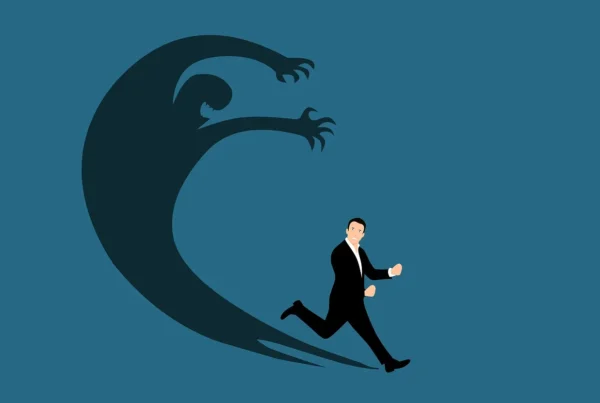Facing Fear: Understanding the Psychology of Fear and How to Work With It
October 15, 2025
October is the month of haunted houses, scary movies, and ghost stories. But for many people, fear isn’t entertainment—it’s a daily experience. Whether it shows up as anxiety, phobias, or trauma responses, fear is a powerful emotion that lives not just in the mind, but in the body.
This spooky season, we’re unpacking what fear really is, how it serves us, and what you can do when fear becomes overwhelming or chronic.
What Is Fear?
Fear is a biological survival mechanism. It tells us when something might be dangerous and triggers a cascade of changes in the body:
- Increased heart rate
- Rapid breathing
- Muscle tension
- Tunnel vision or hyperfocus
These are all signs of the body preparing to fight, flee, or freeze—reactions governed by the autonomic nervous system. In the right context (like crossing a busy street or avoiding a dangerous situation), fear is a lifesaving response.
But when fear shows up when we’re not in real danger—like during a panic attack, in social situations, or when remembering past trauma—it can interfere with daily life.
Fear vs. Anxiety: What’s the Difference?
While fear is a response to an immediate, identifiable threat, anxiety is more about the anticipation of a threat—something that might happen in the future. Both involve the same physical systems in the body and brain, and both can become dysregulated, especially after trauma or chronic stress.
How the Mind-Body Connection Can Help
Because fear is not just in the mind but also stored in the body, working with it requires a holistic approach.
Here are therapeutic and body-based strategies we recommend:
1. Name It to Tame It
When we acknowledge fear instead of fighting it, we begin to shift out of reactivity. Try saying:
- “I notice fear is present right now.”
- “My body is trying to protect me.”
This kind, curious awareness helps reduce shame and bring the brain back online.
2. Ground Through the Senses
Fear activates the sympathetic nervous system. You can shift toward regulation by engaging your senses:
- Hold an ice cube
- Smell calming essential oils
- Listen to a favorite song
- Place your hands under warm water
These sensory anchors bring your attention back to the present moment.
3. Use the Body to Signal Safety
Simple body-based practices like:
- Deep belly breathing
- Humming or chanting (stimulates the vagus nerve)
- Gentle movement or rocking
can send cues of safety to the brain, helping the system calm down.
4. Talk It Through
Therapy provides a safe space to unpack where your fears come from and how they’ve been shaped by your lived experience. With support, fear can become a messenger—not a dictator.
Facing Fear Doesn’t Mean “Feeling Brave”
Contrary to popular belief, courage isn’t the absence of fear—it’s taking a step with fear. Whether that means speaking your truth, attending your first therapy session, or simply staying present in your body for one more breath, it all counts.
If Fear Is Running the Show
If fear is interfering with your relationships, work, or sense of peace, you’re not alone—and it’s not your fault. Your nervous system is doing exactly what it was designed to do: protect you.
At eMOTION, we help clients build tools to respond to fear with curiosity, compassion, and regulation. You don’t have to push fear away—you can learn to live alongside it with greater ease.
This October, may we all learn to face fear—not just in costumes and haunted houses, but in ourselves—with a little more understanding and self-compassion. ♥
Written by: Samantha Haesemeyer, PsyD, MEd
#FacingFear #TherapyTools #MindBodyConnection #AnxietySupport #TraumaInformedCare #NervousSystemHealth #MentalHealthAwareness #FeelToHeal #CourageWithCompassion
 Seasonal Affective Disorder: How to Support Your Mind and Body Through the Darker Months
Seasonal Affective Disorder: How to Support Your Mind and Body Through the Darker Months
Seasonal Affective Disorder: How to Support Your Mind and Body Through the Darker Months
 Pucker Up for Wellness: The Surprising Benefits of Sour Foods on National Pickle Day
Pucker Up for Wellness: The Surprising Benefits of Sour Foods on National Pickle Day
Pucker Up for Wellness: The Surprising Benefits of Sour Foods on National Pickle Day
 Facing Fear: Understanding the Psychology of Fear and How to Work With It
Facing Fear: Understanding the Psychology of Fear and How to Work With It
